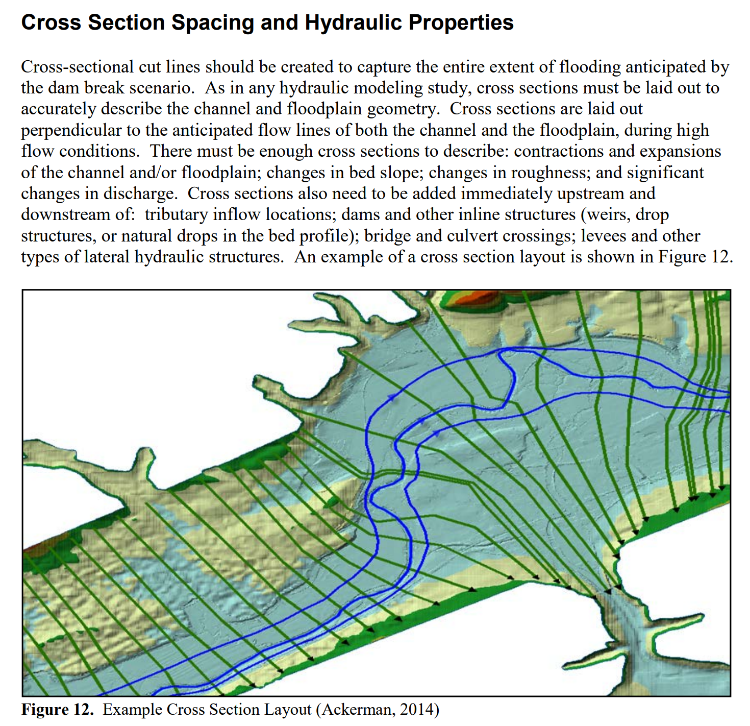Welcome to the RAS Solution › Forums › HEC-RAS Help › 500 Year Crossing Profile
- This topic has 4 replies, 892 voices, and was last updated 8 years, 2 months ago by Anonymous.
-
AuthorPosts
-
October 11, 2017 at 1:20 am #6641AnonymousGuest
I have a problem with a crossing profile with the 500 year flow at a culvert. Ive tried many things to fix it, but I can’t figure out the thing that I did wrong. The crossing profile occurs between cross sections 4-5
Here is a link to the dropbox zip file. https://www.dropbox.com/s/fnxh3uahaasy604/10102017410.P01.zip?dl=0
This is my first time working with HEC-RAS and it has been a huge learning process. Any help would be greatly appreciated.
October 11, 2017 at 1:45 am #10934Jake GParticipantHi Chris,
The culvert output table shows that the 500-year flow has Inlet Control at the culvert, while the rest of the profiles have Outlet Control. As a result, the 500-year profile experiences a supercritical flow regime through the culvert, which results in the crossing profiles. I don’t believe there is anything intrinsically wrong with it hydraulically.
Please see page 6-9 of the HEC-RAS Hydraulic Reference Manual for more details about RAS and inlet vs. outlet control.
Good luck!
– Jake Gusman
p.s. While I didn’t look at the model in detail, the cross sections, especially adjacent to the culvert seems to have too many right angles and/or “doglegs” in them. You may want to reassess those.
October 11, 2017 at 6:22 pm #10935AnonymousGuestThat worked. Thank you very much.
About the dogtails. Do the cross section lines need to be a straight line or go perpendicular to the contours? I was trying to keep the cross sections traveling perpendicular to the contours or travel along the roadway to model if the roadway would get overtopped. Is having the cross sections going along the roadway unnecessary?October 11, 2017 at 7:49 pm #10936Jake GParticipantSome doglegs are fine, but you don’t want an excessive number of doglegs and typically no 90-degree angles in your cross sections. Unless you’re just modeling low flows, think about overall flow direction during a large flood event rather than being focused on localized contour changes that won’t affect the overall flow. Along a bridge roadway, the bounding cross sections should typically be based on the overall flow direction during a large event rather than localized changes along the bridge/roadway.
Here’s a screenshot from an HEC publication (TD-39) that shows a good example of overall cross section layout.
February 26, 2021 at 11:05 pm #10937James WilcoxParticipantHello,
I’ve read the discussion above in an effort to resolve the issue I’m having with crossing profiles that occur when I increase the stream flow data from the Duplicate Effective values to the Pre-Post model values. Below is dropbox link to the Duplicate Effective and Pre/Post RAS models. If you’d like to run the model please use As-Built_Conditions plan, As_Built geometry, and Post_Conditions steady flow for both the duplicate effect and pre/post models.
https://www.dropbox.com/s/buyeknlus483zjn/Ras%20Models%202.zip?dl=0
The issue I am facing is detailed below:
1.) In the Pre-Post Project model, running the As Built Plan with Post_Conditions stream data causes the 500yr and 100yr profiles to cross upstream of each culvert. I am starting to believe this may be due to the flow change location being so close to the upstream culvert. Additionally, I noticed that reducing the 500yr flow at flow change 3274.78 by a few hundred CFS solves the issue so I’m curious as to what is happening with RAS that is causing the increased flow to cause this issue.
Any help is greatly appreciated.
Thanks,
-
AuthorPosts
- You must be logged in to reply to this topic.
